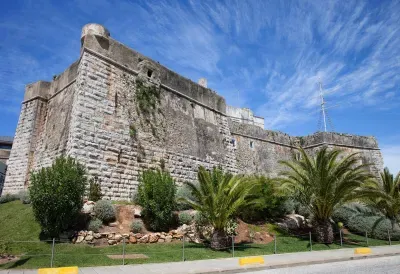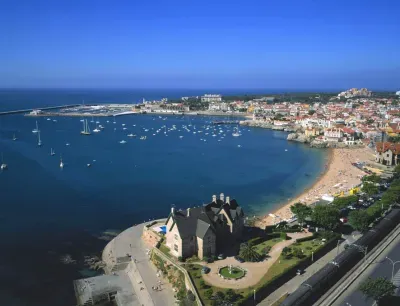
Cidadela de Cascais 
Citadel Cascais Carlos Luis M C da CruzCitadel of Cascais
This 15th century citadel, overlooking Cascais marina at the mouth of the Tejo Estuary, has played a crucial role in the history of Portugal, having witnessed fights against pirates as well as battles against Spanish and French forces.
The original fort and tower, Torre de Santo Antonio de Cascais was built on the orders of King John II of Portugal and completed in 1490, as part of a series of defensive positions to protect the city of Lisbon from invasion by sea. But in 1580 the defences proved inadequate to resist invasion by the Duke of Alba, who claimed Portugal for the Spanish King Philip II of Spain (the king who launched the Spanish Armada against England). The Spanish added further defences here, including the Fort Nossa Senhora da Luz garrison.
In 1755 the earthquake and tsunami which devastated Lisbon caused significant damage to the citadel. The fort and tower were rebuilt and played an important defensive role during the Napoleonic Wars.
A century later, in 1871, King Louis I of Portugal had the fort converted into a royal summer residence. After the abolition of Portugal’s monarchy, parts of the fort continue to be used for state occasions and to house visiting foreign dignitaries.
Today part of the former military barracks have been converted into living accommodation for the Pestana Cidadela Cascais, a five-star luxury hotel, which tastefully blends modern comforts with the historic surroundings and features an on-site Art Centre. There is also a museum in the citadel, offering guided tours.
Address
Av. Dom Carlos ICascais2750-310Attraction type

Cascais travel guide »
At the end of one of the suburban train lines out of the capital lies Cascais. This once tiny fishing village has grown in the last century to become the elegant beach town that it is today. Visitors are no stranger to Cascais, having attracted various monarchs over the ages, a summer-dwelling artistic community in the thirties and continued to charm people both Portuguese and foreign ever since…